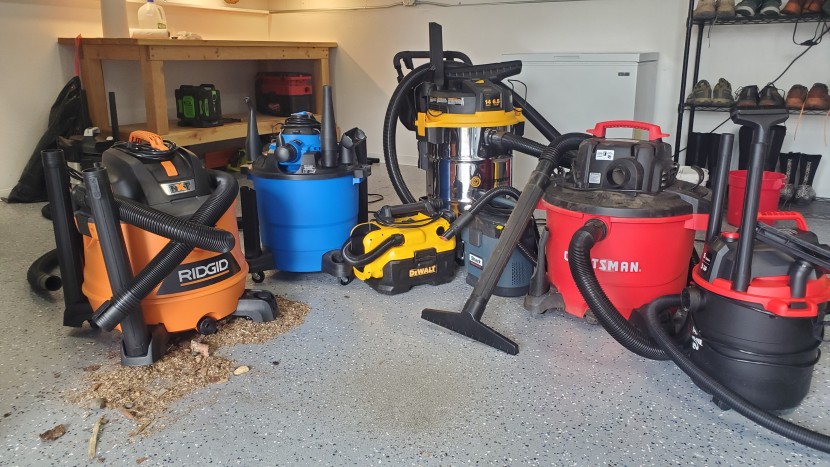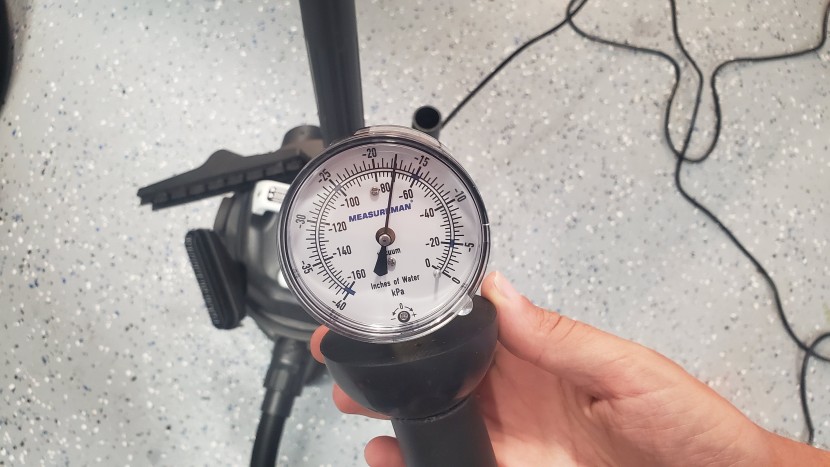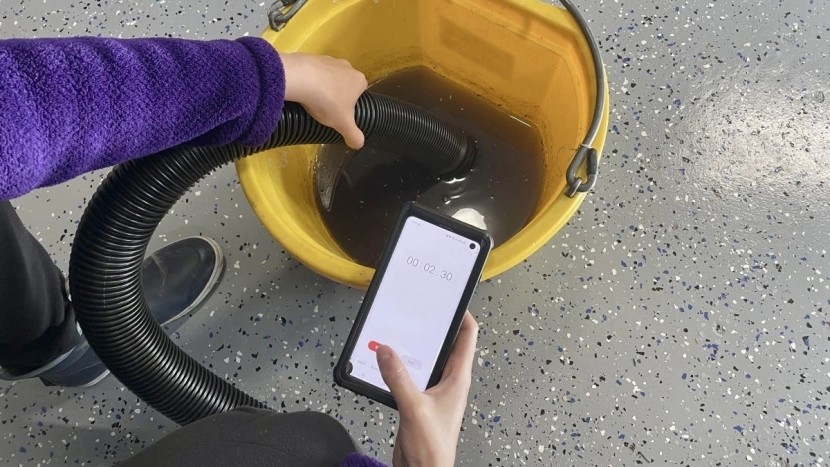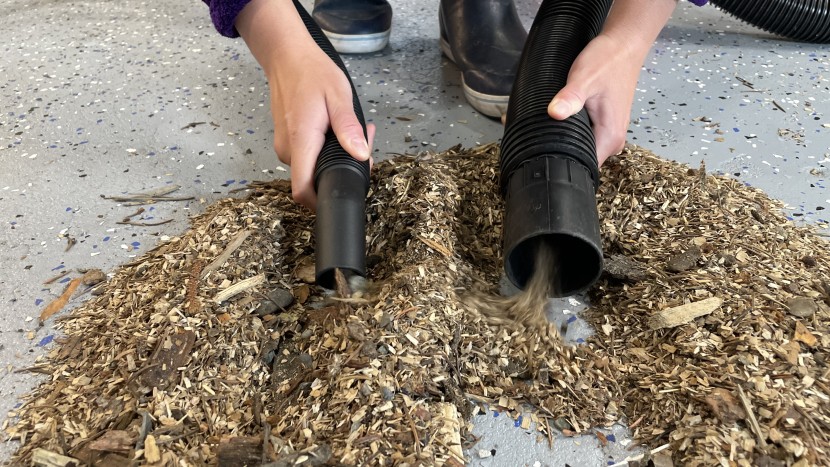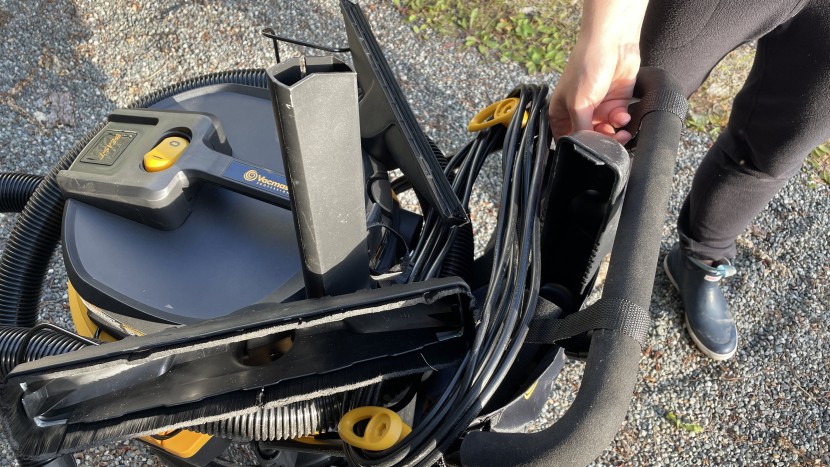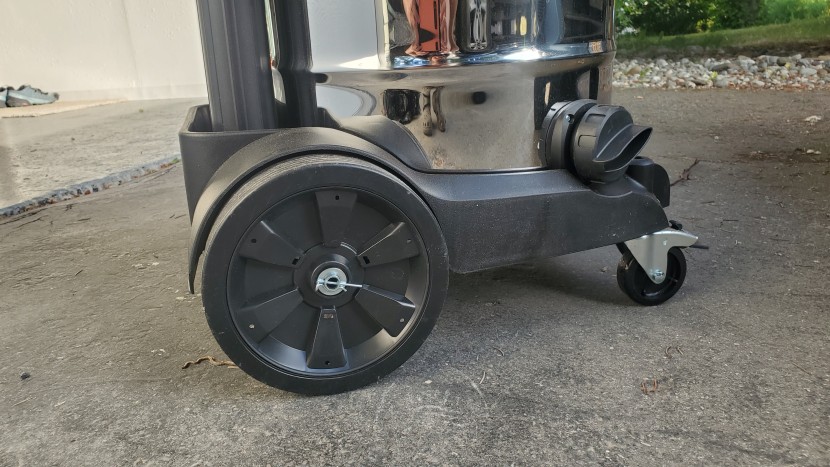Shop vacuums are built for a different kind of cleaning than the upright or cordless vacuums most people use at home. Instead of tackling light dust and pet hair, they are designed for heavier, messier jobs such as fine sawdust, nails, wet leaves, and even standing water. Because of this, we evaluate them with both real-world cleanup tasks and repeatable, measurable tests that reflect how they are actually used in workshops, garages, and job sites.
Airflow & Suction Power
The primary factor that influences how well a shop vac performs on the job is its power. They rely on a balance of strong suction and high airflow to move both heavy debris and bulky material through wider hoses into the canister. This combination is what allows them to handle everything from fine sawdust to scattered hardware.
Using a water lift gauge, we secured it to the end of the hose (with no added attachments) with a tight seal to measure the suction power and measured the reading in inches of water (inH2O). We repeated this three times to ensure an accurate reading.
Airflow is the volume of air the vacuum pulls per unit time (cubic feet per minute or CFM). Using a handheld anemometer, we measured the maximum airspeed at the end of the hose (also with no attachment). Then we measured the diameter of the hose and calculated the cross-sectional area. Taking both these numbers, we were able to estimate the airflow for each vacuum. We repeated this three times to find the highest airspeed and corresponding airflow.
Take this analogy of a car:
Horsepower is like the size of the engine in a car. It tells you how much raw potential power the motor has, but not necessarily how efficiently it's used.
Suction is the car's ability to climb a steep hill. It shows the strength of the vacuum when pulling against heavy resistance, like lifting dense debris or pulling water.
Airflow is the top speed of the car. It measures how much air the vacuum can move, which is what actually carries lighter debris and dust into the tank.
When you're looking at shop vacs, don't get tripped up by the power numbers on the box, as they can be pretty misleading. A lot of manufacturers advertise peak horsepower, but that's just the motor's absolute maximum for a split second under perfect conditions, not what you'll get in real-world use.
After we take measurements, we use the vacuums on real-world projects with heavy and dense items to see if they can handle practical situations. We combine controlled measurements with real-world testing to build a clear picture of a shop vac's full capabilities.
Floor Cleaning
Floor cleaning is a vacuum's ability to quickly and thoroughly remove debris without clogging. For a shop vac, this is essential to handle a wide variety of messes and leave nothing behind while maintaining smooth performance every time. We evaluated this using two timed tests along with hours of real-world use to see how each model performs in practical situations.
The first timed test was the dry mess pickup. This consisted of timing how long it took each vacuum to clean up a two-gallon pile of mixed debris on a hard surface without any attachment on the hose. The debris consisted of a range of materials from fine particles like dust and wood chips to large and heavy chunks like thick mulch, plastic debris, and metal hardware.
The second timed test was the wet mess pickup. This tested the vacuum's ability to pick up water and mud. With two gallons of muddy water in a bucket, we timed how long it took each vacuum to remove the water without any attachment on the hose.
Lastly, we spent hours testing our lineup of vacuums using them on a variety of surfaces in real-world scenarios. From sucking up pine needles embedded in thick carpet, to cleaning up leaves and yard debris from grass, to sucking up mud and dirt out of the garage, we tested how each vacuum removed debris of different sizes and masses from various surfaces.
Tool Use
Attachment styles and storage systems are almost as diverse as the shop vacs themselves. Every shop vac comes equipped with different attachments for specific purposes. These attachments have a significant impact on how useful each vacuum is and for what task it is most suited for. From car-specific attachments to wet cleanup to crevice tools, attachments come in all shapes and sizes. We also rated these attachments on how well they store on the vacuum itself. We gave this metric a ten percent weight.
We tested attachments and storage by using each shop vac for hours for different uses. From vacuuming out the car to cleaning up the yard and garage, we tried different attachments for different jobs. We also intentionally used the attachments for tasks they were not designed for to test their versatility and functionality. When not in use, we evaluated how securely the attachments were stored on the vacuum when in transit or moving between jobs.
Portability
A portable shop vac rolls smoothly across multiple surfaces, is easy to carry, and is intuitive to use in different scenarios. We tested each shop vac across multiple settings to see how easy it was to move and transport. From working in the yard to the job site to lugging it in and out of the back of a truck, each vacuum was used extensively to better understand its performance in this metric.


